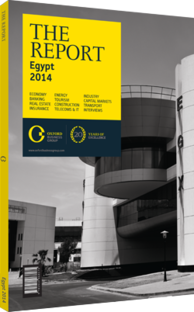Significant subsidy cuts to reduce the budget deficit
Speaking to local press in April 2014, former petroleum minister Osama Kamal summed up the government’s dilemma regarding subsidy reform, “There is no nice time to cut subsidies, but the government has to.” Successive governments have learnt the hard way the costs associated with tampering with Egypt’s unwieldy subsidy system. Anwar Sadat’s attempts in 1977 to reduce state subsidisation on fuel, bread and 25 other consumer goods resulted in the sacking of presidential guest houses across the country and attacks on police stations, government offices and state-owned businesses.
Sadat’s successor, Hosni Mubarak, prompted an only slightly less extreme response with his attempts at subsidy reform in 1986. Since then, politicians have found it easier to sidestep the subsidy issue rather than confront it and, despite some minor technical alterations, the country’s subsidy system has remained largely intact.
High Costs
However, Egypt’s deteriorating economic situation has brought the issue of subsidies to the fore once more. In the 2012/13 financial year, the nation’s budget deficit reached 14% of GDP, forcing the country to rely on foreign assistance in order to meet its budget obligations.
While a process of taxation reform, the possibility of a recovery in the tourism sector as well as a longer-term plan to boost receipts from the Suez Canal together combine to offer the prospect of increased government revenues in the years to come, the high cost of subsidies continues to undermine efforts to balance its books.
After a succession of previous attempts, the government opted to make a clear cut in spending after presidential elections in 2014. In July 2014 it announced significant subsidy cuts across a range of fuels aimed at reducing the discrepancy between the price at which the government purchases products and that at which it sells them. The move resulted in sizeable cost increases for consumers. Diesel grades rose in price between 64% and 78%, natural gas (which most of the nation’s taxi fleet relies on) saw a 175% increase, while 92-octane petrol was made 40% more expensive. The higher grade 95-octane petrol’s modest price rise of 6.8% reflected that the subsidy of this product was almost completely removed in November 2012.
The reduction in fuel subsidy rates is an important first step in a longer-term process of subsidy reform which will also see the government lower bread subsides by 13% over the 2014/15 fiscal year. Vitally, the reforms appear to have been broadly accepted by the population, and the unrest experienced in the 1970s and 1980s has been avoided, although there has been opposition in select sectors.
Egypt’s taxi drivers switched off their meters on the first day of the new rates’ implementation, for example, and called a strike which blocked some of Cairo’s principal arteries. In response, the government allowed them to raise the meter rates to accommodate the new fuel charges, although the LE100 ($14.20) fee to do so met with further protest. Press reports have also indicated concern among large-scale industrial consumers, such as cement and steel factories, which will pay between 30% and 70% more for their fuel under the new system.
Knock-on Effects
There is also the wider question of the effect of the subsidy cuts on inflation, with the fuel hikes expected to feed into a rise in prices of most consumer goods. After the announcement of the subsidy changes, the Consumer Protection Agency issued a statement in which it foresaw a 200% rise in the prices of some consumer goods as a result of the move, warning that such an increase was beyond the reach of most Egyptians.
For now, it seems, the government has succeeded in making its case for the reform of subsidies, but the reaction to its efforts demonstrates the narrow path it must tread between its long-term economic objectives and the will of the Egyptian people.
You have reached the limit of premium articles you can view for free.
Choose from the options below to purchase print or digital editions of our Reports. You can also purchase a website subscription giving you unlimited access to all of our Reports online for 12 months.
If you have already purchased this Report or have a website subscription, please login to continue.

